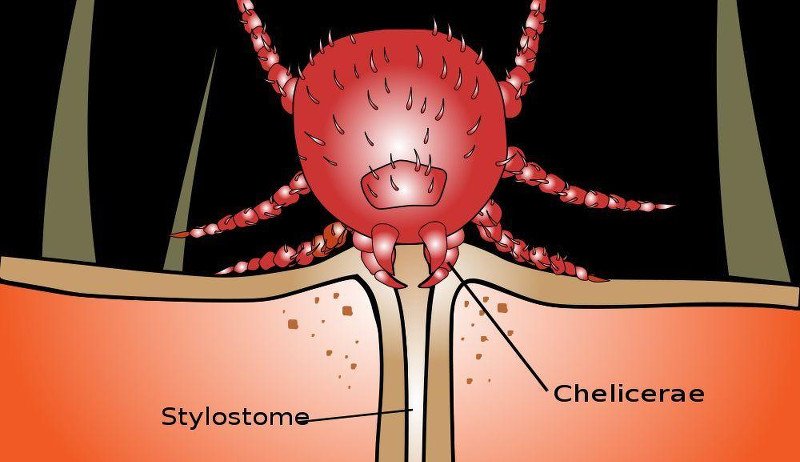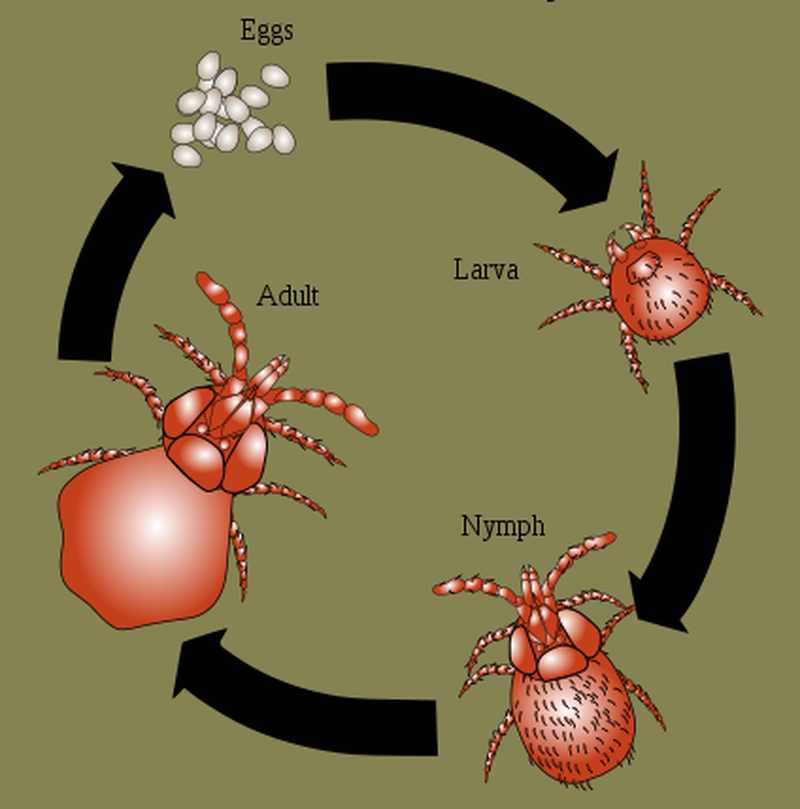
Enjoying the great outdoors in the prime of summer requires accepting that other life is thriving at the same time. Mosquitoes, ticks, fleas and chiggers are some of those less popular—maybe even despised—wildlife with which we share our gardens and farms. Because we can’t avoid them, we might as well understand what chiggers want from us.
What Chiggers Are—And What They Are Not
Chiggers are a type of arachnid, technically not an insect. They’re extremely small and difficult to see with the unaided eye. Their color varies from yellow-orange to a light red. They’re hairy. Let’s suppose you get a close enough look at one of these miniscule creatures and count its legs. You’ll find only six. If you think insects have six legs and arachnids (such as spiders) have eight, you’re right. But that doesn’t count the immature forms of arachnids such as harvest mites, and a chigger is the larval stage of the harvest mite. After life as a larva, the chiggers metamorphose into eight-legged nymphs and go through several growth cycles until they become adults.

Adults overwinter in the soil, emerge as the weather warms up, mate, lay eggs and die. Those eggs will complete their life cycle in about 50 days, assuming the larva finds a host. Only the larval form is parasitic. The nymphs and adults are predatory mites that eat insects, including mosquito eggs.
Turkey mites, also known as seed ticks, are not the same as chiggers. There are some similarities, however: Turkey mites are the larval form of lone star ticks, have six legs before maturing into eight-legged adults, and cluster in a very annoying tiny army that is difficult to detect and remove. The difference? Ticks are parasites their entire lives, therefore less helpful when it comes to preying on other insects.
What Chiggers Do
Chiggers lurk in tall grasses, forests, low wetlands and humid, brushy areas. They basically loiter along the edges of grasses with outstretched arms, waiting for a host to pass near enough to cling on. They are sensitive to the exhales of mammals; the main clue they look for is carbon dioxide. Warmth and movement also alert chiggers to a meal. They don’t travel far, live in concentrated patches wherever the females have laid eggs, and the host has to come to them. Often, two people can be out picking berries or mowing grass, and one gets chigger bites while the other does not.
Our Bodies Do Battle
Chiggers are parasites, but they don’t feed on blood. Unlike mosquitoes and ticks, chiggers go after skin cells rather than blood. However, they need those skin cells to become liquid, so they digest them before they suck them up, by injecting their enzyme-rich saliva into the skin. They do not burrow in. Rather, the itching response is our body’s immune reaction to this enzymatic breakdown. At the same time, the skin builds up a protective wall, a welt, which the chigger uses as a drinking straw to slurp up the liquefied flesh. Yum.
According to the Alabama Cooperative Extension Service, most chiggers that attach to a human will die within 24 to 72 hours. Our immune systems do a good enough job to prevent the chiggers from getting adequate nutrition, so they will be better off if they can find a different animal’s flesh to feast on. Luckily, those of us in North America have much less to worry about than folks in East Asia and the South Pacific, where a different type of chigger transmits scrub typhus. Our chiggers, unlike our ticks, don’t transmit diseases to humans.
How To Avoid Chiggers
Staying out of long grass or thick brush is the most obvious way to avoid chiggers. More involved strategy would be modifying your ecosystem by mowing, pruning and altering water flow to allow in more light and air, to be less humid and dark. Protect yourself by becoming a less-attractive target. Long pants, light-colored clothing, and the ever-fashionable socks-over-pants technique are highly recommended. While hiking or gardening, shake yourself off every half-hour to dislodge any hangers-on, because you probably won’t know if you’re host until a day or two after exposure. Within a couple of hours of being outside, wash your clothes and yourself thoroughly with hot, soapy water, especially where sweaty waistbands and underwear had been.




